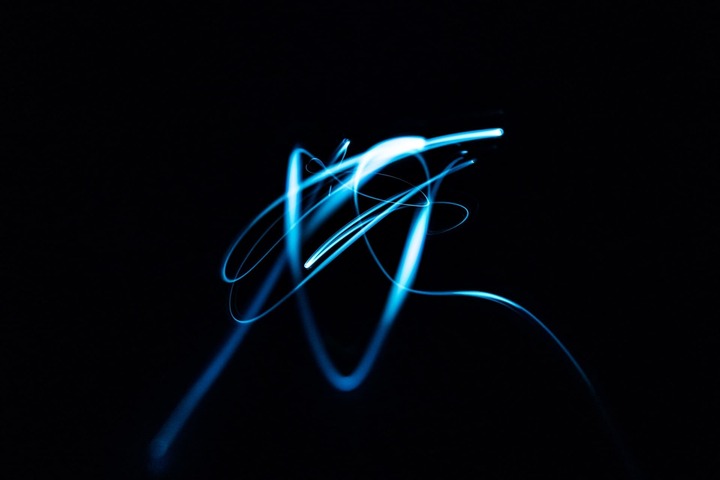How to Create Glowing Images with React
Published at April 18, 2022.

First of all, even though this tutorial is based on React, you can apply the same technique with any library/framework or just HTML and CSS.
Preparing the Template
Let's run the following command to create a new React app by using Vite.
npm create vite@latestProject name: glowing-image-demo
Select a framework: React
Select a variant: TypeScriptAfter the installation is done and our project is created, we can open it and install our dependencies.
npm installWe will delete assets folder in src since we don't need it, apply some global styles to override the default browser stylings and a dark background to make the glow effect more visible.
*,
::before,
::after {
box-sizing: border-box;
}
body {
padding: 0.8rem;
background-color: #19222d;
}Now, our template is ready and we can start creating our glowing images!
Glowing Images
Let's start creating GlowingImage component to render our images.
.glowing-image {
width: 100%;
object-fit: cover;
border-radius: inherit;
}import './GlowingImage.css';
type GlowingImageProps = Pick<
React.ComponentPropsWithoutRef<'img'>,
'src' | 'alt' | 'width' | 'height'
>;
export default function GlowingImage(props: GlowingImageProps) {
return (
<div className="glowing-image-root">
<img className="glowing-image" {...props} />
</div>
);
}We will use Picsum to display random images.
Let's display the image by centering it horizontally in our app.
.main-content {
display: flex;
justify-content: center;
padding: 1rem;
}import './App.css';
import GlowingImage from './GlowingImage';
export default function App() {
return (
<main className="main-content">
<GlowingImage
src="https://picsum.photos/230/345?random=0"
alt="Glowing Image"
width={230}
height={345}
/>
</main>
);
}It should look like this now:
Now we need to add the glow effect. As you can guess, we will use glowing-image-root to add the stylings.
We will create a pseudo element by using ::before and set its background image as same as our image. By doing this, we will have two layers of the same image on top of each other.
To be able to share the image URL between the component and CSS, we use custom properties (CSS variables).
We also set border-radius and make <img> to inherit it to have a little rounded image.
.glowing-image-root {
position: relative;
border-radius: 0.6rem;
}
.glowing-image-root::before {
content: '';
position: absolute;
inset: 0;
background: --var(img-url);
background-size: cover;
background-position: center;
background-repeat: no-repeat;
border-radius: inherit;
}
.glowing-image {
width: 100%;
object-fit: cover;
border-radius: inherit;
z-index: 1;
}import './GlowingImage.css';
type GlowingImageProps = Pick<
React.ComponentPropsWithoutRef<'img'>,
'src' | 'alt' | 'width' | 'height'
>;
export default function GlowingImage(props: GlowingImageProps) {
return (
<div
className="glowing-image-root"
style={
{
'--img-url': `url(${props.src})`,
} as React.CSSProperties
}
>
<img className="glowing-image" {...props} />
</div>
);
}Now, we can apply stylings to the background image, without affecting the original one.
To imitate a glow effect, we will add some blur to the background image and give it a little saturation to make its colors sharper.
.glowing-image-root {
position: relative;
border-radius: 0.6rem;
}
.glowing-image-root::before {
content: '';
position: absolute;
inset: 0;
background-image: var(--img-url);
background-size: cover;
background-position: center;
background-repeat: no-repeat;
z-index: -1;
border-radius: inherit;
/* You can change these values until it looks fine to you */
filter: blur(0.6rem) saturate(2);
}
.glowing-image {
width: 100%;
object-fit: cover;
border-radius: inherit;
}We have a subtle glow now!
To make it more visible, we can apply some scaling too. We can make the background image bigger by scaling it up, but I prefer making the original image slightly smaller like:
.glowing-image-root {
position: relative;
border-radius: 0.6rem;
}
.glowing-image-root::before {
content: '';
position: absolute;
inset: 0;
background-image: var(--img-url);
background-size: cover;
background-position: center;
background-repeat: no-repeat;
z-index: -1;
border-radius: inherit;
/* You can change these values until it looks fine to you */
filter: blur(0.6rem) saturate(2);
}
.glowing-image {
width: 100%;
object-fit: cover;
border-radius: inherit;
transform: scale(0.98);
}And it's done!
To better understand this technique, we can make the original image non-visible temporarily and reveal our glowing image trick like:
.glowing-image-root {
position: relative;
border-radius: 0.6rem;
}
.glowing-image-root::before {
content: '';
position: absolute;
inset: 0;
background-image: var(--img-url);
background-size: cover;
background-position: center;
background-repeat: no-repeat;
z-index: -1;
border-radius: inherit;
/* You can change these values until it looks fine to you */
filter: blur(0.6rem) saturate(2);
}
.glowing-image {
width: 100%;
object-fit: cover;
border-radius: inherit;
transform: scale(0.98);
opacity: 0;
}If you want, you can also add some hover animation to the glow effect like:
.glowing-image-root {
position: relative;
border-radius: 0.6rem;
}
.glowing-image-root::before {
content: '';
position: absolute;
inset: 0;
background-image: var(--img-url);
background-size: cover;
background-position: center;
background-repeat: no-repeat;
/* z-index: -1; */
border-radius: inherit;
/* You can change these values until it looks fine to you */
filter: blur(0.6rem) saturate(2);
}
@keyframes glow {
from {
transform: scale(1);
}
to {
transform: scale(0.98);
}
}
.glowing-image-root:hover::before {
animation: glow 500ms ease-in-out alternate infinite;
}
.glowing-image {
width: 100%;
object-fit: cover;
border-radius: inherit;
transform: scale(0.98);
}Hover the image to see the effect!
Thanks for reading!